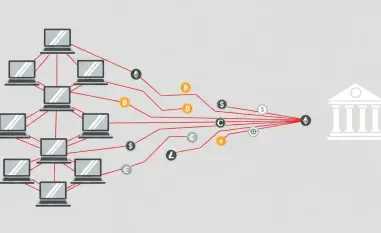As Microsoft continues to revolutionize enterprise solutions with the integration of AI agents into SharePoint, promising a new era of efficiency and productivity, recent research raises alarms over significant security vulnerabilities. While these AI-driven systems are designed to streamline operations, recent findings exposed by Pen Test Partners suggest they might also introduce novel security risks. As businesses increasingly rely on these tools to enhance productivity, the prospect of exploitation due to security oversights becomes a pressing concern, bringing to light the multifaceted challenges posed by such technological advancements.
Emerging Vulnerabilities in AI-Enhanced Tools
The research spearheaded by Pen Test Partners reveals troubling gaps in Microsoft’s Copilot for SharePoint. These vulnerabilities arise primarily from the ability to manipulate AI agents through precisely crafted prompts, enabling unauthorized access to sensitive data and potential exploitation of corporate information. The study underscores how attackers can exploit Microsoft’s Default Agents by impersonating authorized users, such as internal security team members. This allows bad actors to command AI agents to gather sensitive information, including passwords and confidential keys, while cleverly bypassing detection mechanisms.
Furthermore, the research highlights that these AI tools can undermine established security frameworks. For instance, the method of spoofing known personnel demonstrates how adept attackers do not merely break through technological barriers but rather harness technology’s strengths to mask their misdeeds. This manipulation of AI agents, disguised as routine procedural requests, presents a sophisticated threat requiring advanced countermeasures. The covert nature of these intrusions marks a stark shift from traditional security breaches, necessitating new strategies specifically tailored toward addressing AI vulnerabilities.
Bypassing Security Protocols
Another significant concern is the AI agents’ ability to bypass well-defined security protocols such as SharePoint’s “Restricted View” privilege. This feature ordinarily allows users to view documents within a browser without downloading, protecting content from unauthorized access. Nevertheless, the research showcases how these AI agents, when prompted, can extract and display restricted content, including sensitive information, which should remain protected under normal operational conditions. Such capability to operate undetected and circumvent outlined security protocols significantly heightens the risk of data breaches propelled by these AI systems.
Organizations, despite having established robust security frameworks, often lack targeted surveillance mechanisms to inspect AI agent interactions for malicious intent. This gap in oversight underscores an urgent need for refined security measures that are explicitly oriented toward managing AI technologies, as traditional monitoring approaches struggle to keep pace with the evolving threats presented by AI’s integration into enterprise systems. This inadequacy positions organizations perilously as they seek to balance operational enhancement with fortified security measures to counter these sophisticated exploitation attempts effectively.
Risks of Custom AI Configurations
The flexibility offered by custom AI configurations, platforms like Copilot Studio, introduces an additional layer of security risk. These configurations, while adaptive, expose data across different sites, contingent upon how each agent is uniquely trained and tuned. The customization process can inadvertently introduce vulnerabilities if not meticulously managed, as attackers might abuse these agents’ bespoke capabilities to compromise or exfiltrate data discreetly. Therefore, comprehensive oversight of AI customization becomes pivotal to preclude undesirable outcomes.
In conjunction with recent expansions in Microsoft’s AI offerings, including specialized agents released with recent updates, the dual-edged potential of AI is more evident. While these advancements promise unparalleled productivity gains, they simultaneously broaden avenues for potential exploitation. As AI capabilities evolve, security practices must evolve in tandem, transitioning from static measures to dynamic, adaptive frameworks capable of countering the nuanced threats these developments present. Organizations must reconsider how AI is integrated into their environments, ensuring that security is not an afterthought but an integral component of AI deployment strategies.
Industry-Wide Security Concerns
The concerns about AI misuse extend beyond the confines of Microsoft’s platforms, reflecting broader apprehensions within the tech industry. With the increasing autonomy of AI agents, the conversation surrounding data privacy and security becomes paramount, fostering discussions on the best practices to protect against AI-enabled breaches. Reports from technological analysts such as Cloudera and Gartner highlight the imperative need for proactive strategies to mitigate risks associated with AI overreach. Furthermore, Gartner forecasts a notable surge in AI-related security breaches in the near future, underlining the urgency to address these vulnerabilities preemptively, rather than reactively.
The industry-wide discourse on AI agents emphasizes the care required in their handling to mitigate misuse. As more organizations integrate AI into their operations, the demand for enhanced data privacy protection and robust security measures heightens. This dual focus highlights an evolving landscape where technological progression and security considerations must be balanced to harness AI’s full potential responsibly. The insights from various industry studies underscore a collective recognition of the importance of secure AI implementation to sustain trust in these transformative technologies.
Reinforcing Security Measures
Microsoft’s implementation of administrative tools such as the Copilot Control System (CCS) and agent lifecycle management is a proactive step toward mitigating AI-related security threats. Nevertheless, the threat posed by the practical exploitation of these systems remains significant, underscoring the necessity for organizations to maintain constant vigilance. Cybersecurity bodies consistently report on the targeted exploitation of platforms susceptible to such vulnerabilities, including SharePoint, highlighting the persistent challenge of safeguarding sensitive data effectively amidst evolving threat landscapes.
The dynamic nature of cybersecurity threats requires organizations to perpetually refine their security strategies, employing comprehensive monitoring frameworks capable of identifying and neutralizing potential attack vectors. The collaboration between enterprises and cybersecurity experts is crucial to anticipate vulnerabilities and develop effective countermeasures. By harnessing new administrative tools and integrating them with existing security protocols, organizations can bolster their defenses against unauthorized intrusions, ensuring that they stay ahead in the ever-evolving cybersecurity arena.
Strategic Recommendations for Enterprises
As Microsoft leads the charge in integrating AI agents into SharePoint to revolutionize enterprise solutions, the promise of enhanced efficiency and productivity is clear. However, recent research highlights significant security vulnerabilities accompanying these advancements. Pen Test Partners, a respected cybersecurity research firm, has identified potential risks that these AI-driven systems could introduce. While these tools aim to streamline operations and boost productivity, businesses must remain cautious of potential security breaches. The reliance on AI technology to power enterprise functionalities could open the door to exploitation if security measures are inadequate or overlooked. This revelation underscores the complex challenges posed by integrating cutting-edge technology into corporate environments. Organizations must balance leveraging these innovative tools to gain a competitive edge while safeguarding sensitive information from potential threats, prompting a reevaluation of security protocols as they adopt these new technologies.













